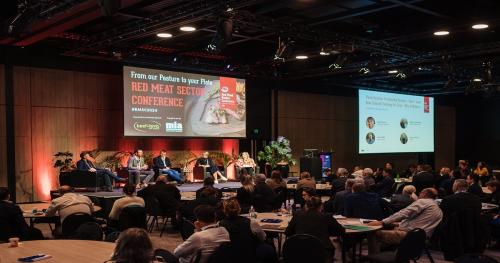Search results
Displaying 341 - 350 results of 892
- Factsheet10800 beeflamb 0800 233 352 wwwbeeflambnzcom farmers farmers shelter maintaining welfare productivity sheep cattle drystock farms fact sheet 17 4 may 2019 new zealands temperate climate means farmers …
- Factsheetsubmission ministry environment managing intensive winter grazing proposed changes regulations from beef lamb new zealand deer industry new zealand new zealand deer farmers association blnz logo 7 …
- NewsTwo of the world’s leading experts on global agriculture and food trade trends have told the Red Meat Sector conference in Christchurch they expect beef and sheepmeat prices to continue to rise over …

- NewsSince the start of the Taste Pure Nature brand marketing campaign in 2019, B+LNZ has been tracking its performance in the United States (US) and China to benchmark the campaign’s performance. Read …

- NewsWill Halliday, Beef + Lamb New Zealand’s Senior Advisor Animal Welfare and Biosecurity, says flood affected farmers in the north will be dealing with infrastructure damage as well as silt damaged …

- Other PDF… 3 calving ease 4 feed efficiency 5 postweaning growth 6 growth weaning 7 carcase weight 8 carcase dressing 9 …
- NewsIn the election as part of the 2023 B+LNZ Annual Meeting process, Mr Young received 8,777 weighted votes while incumbent director and chair Andrew Morrison received 6,587 votes – a winning margin of …

- NewsThe recent Red Meat Sector Conference in Wellington featured a Beef + Lamb New Zealand-sponsored panel where leading farmers discussed their personal perspectives on sustainability, intergenerational …

- NewsB+LNZ is proud to work alongside Primary ITO | Te Pūkenga to ensure we invest in growing, training and retaining people in the sector. Short learning options for shepherds Let’s talk feed – are we …

- Resource bookfreshwater ecosystem health farm plan environment module 1 fp12025 resources made possible sheep beef farmer investment industry beef lamb new zealand liable any damage suffered result reliance …